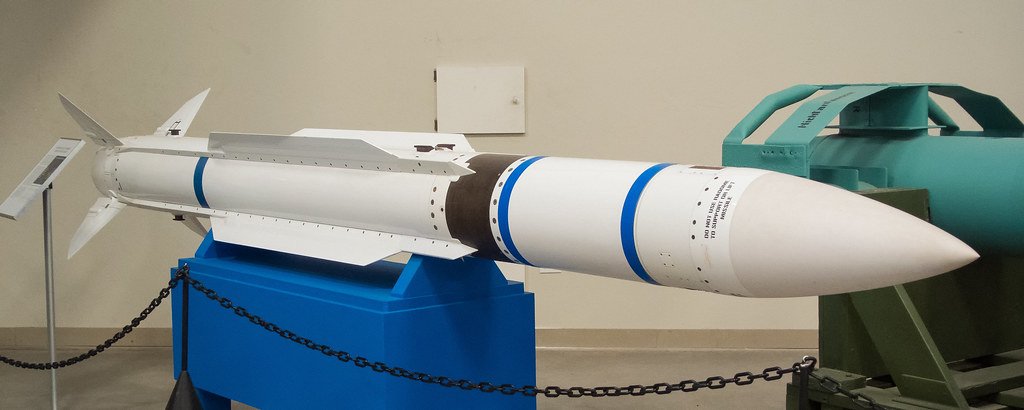The Morris Worm’s release on November 2, 1988, had far-reaching consequences for both the internet and cybersecurity practices. Its immediate impact was seen in widespread system slowdowns, network crashes, and significant disruptions to early internet services. This incident underscored critical vulnerabilities in Unix systems and highlighted the urgent need for improved security measures and protocols. The worm’s disruptive effects led to the establishment of the Computer Emergency Response Team (CERT) and prompted organizations to enhance their cybersecurity practices.
In the longer term, the Morris Worm’s aftermath catalyzed significant changes in how digital systems were secured and managed. It contributed to the development of industry standards and best practices for cybersecurity, fostering a more proactive and collaborative approach to threat detection and response. Additionally, the worm’s legal and public impact emphasized the importance of cybersecurity education and the ongoing need for research and technological advancements in digital defense.
Table of Contents
The Morris Worm Unleashed: A Pioneering Threat
On November 2, 1988, the Morris Worm emerged as one of the earliest major computer worms to spread across the internet. Developed by Robert Tappan Morris, a graduate student at Cornell University, the worm was intended as a research experiment. However, design flaws in the worm led to widespread disruptions, marking a significant event in cybersecurity history.

What Does the Morris Worm Virus Do?
The Morris Worm was initially created to explore and showcase vulnerabilities in computer systems. However, it unintentionally caused significant disruptions by exploiting weaknesses in Unix-based systems. The worm spread rapidly across networks, leading to widespread system slowdowns, crashes, and network congestion. Its unintended consequences exposed critical security gaps and underscored the urgent need for more robust cybersecurity measures and better system defenses. The Morris Worm’s impact highlighted how unaddressed vulnerabilities could lead to severe disruptions, prompting a broader focus on improving security practices in the growing field of computing.
How the Morris Worm Spread: Mechanisms of Infection
Exploiting System Vulnerabilities
The Morris Worm was a sophisticated piece of malware that targeted specific vulnerabilities within Unix-based systems. Its ability to exploit these flaws allowed it to spread rapidly and cause significant disruption.
Finger Daemon Exploits
The finger daemon is a network service that provides information about users on a system, such as their login names and other details. The Morris Worm took advantage of vulnerabilities within this service to gain unauthorized access to systems. By exploiting these weaknesses, the worm was able to gather information on users and potential targets, which facilitated its infiltration into various networks. Once the worm accessed a system, it used the compromised machines to continue its propagation.
Sendmail Exploits
Sendmail is a widely used program for handling email communication on Unix systems. The Morris Worm exploited known flaws in sendmail to spread itself across networks. It did this by sending copies of the worm to other systems via email, using the vulnerabilities in sendmail to bypass security measures. This method of distribution allowed the worm to propagate quickly and widely, as it could infect new systems without requiring user interaction.
The combination of these vulnerabilities enabled the Morris Worm to infiltrate and compromise numerous systems. The worm’s ability to exploit both the finger daemon and sendmail highlights the importance of addressing known vulnerabilities and implementing robust security practices. Its impact underscored the need for improved security measures and helped shape the evolution of cybersecurity strategies.
Cracking Passwords
To expand its reach, the Morris Worm used a dictionary-based approach to crack passwords. This method involved systematically attempting a list of common or likely passwords until the correct one was found. By exploiting weak or predictable passwords, the worm gained unauthorized access to additional systems. This password-cracking technique significantly accelerated the worm’s spread, as it could infiltrate and control multiple machines without requiring explicit user consent. The worm’s success in exploiting weak passwords highlighted the need for more robust password policies and more sophisticated authentication mechanisms.

Autonomous Replication
A defining characteristic of the Morris Worm was its capability for autonomous replication. Once it infected a system, the worm did not rely on user interaction to spread further. Instead, it used the compromised system as a base to infect additional machines, creating a chain reaction of infections. This self-sustaining mechanism allowed the worm to propagate rapidly across networks, amplifying its impact and causing widespread disruptions.
The worm’s autonomous replication demonstrated the potential for malware to spread uncontrollably, emphasizing the need for proactive monitoring and containment strategies to prevent similar outbreaks in the future.
Inside the Worm: Technical Details and Impact
Exploiting Specific Vulnerabilities
The Morris Worm was crafted with a keen understanding of system software vulnerabilities. It exploited these flaws to achieve its objectives of spreading and causing disruption:
Data Collection via the Finger Daemon
The finger daemon was a network service used to provide information about users on a system. The Morris Worm targeted this service to gather detailed information about potential targets within a network. By exploiting vulnerabilities in the finger daemon, the worm could retrieve user details and other critical system information, which helped it identify and select new systems to infect.
Self-Propagation through Sendmail Vulnerabilities
Sendmail, a widely used email transfer agent in Unix systems, was another critical target. The worm exploited specific weaknesses in the sendmail program to facilitate its replication. By leveraging these flaws, the Morris Worm could send copies of itself to other systems via email. This method of distribution was particularly effective because it allowed the worm to infiltrate systems across different networks and geographical locations, significantly enhancing its spread.
Network Disruption
The rapid and unchecked spread of the Morris Worm led to severe network congestion. Automated scripts overwhelmed systems by searching for and infecting vulnerable machines, causing significant slowdowns and crashes.
System Overload and Payload Effects
The worm’s payload was designed to induce system overloads. Once it infected a system, it created multiple processes that consumed excessive resources, resulting in slowdowns or crashes. This disruption underscored the urgent need for improved security practices and defenses.
The Morris Worm Today: Legacy and Evolution

The Morris Worm’s Place in History
Trailblazer in Cyber Threats
The Morris Worm is recognized as one of the earliest significant computer worms, marking a crucial milestone in the evolution of cybersecurity. Its emergence in 1988 exposed the inherent vulnerabilities of early internet systems and underscored the urgent need for enhanced security measures. By demonstrating how easily vulnerabilities could be exploited, the worm served as a wake-up call for both the technical community and organizations, leading to increased awareness about the importance of cybersecurity.
Legal and Ethical Milestones
The Morris Worm also played a pivotal role in shaping legal frameworks for addressing computer crimes. It was instrumental in the first conviction under the Computer Fraud and Abuse Act (CFAA) in the United States. Robert Tappan Morris, the creator of the worm, was found guilty of unauthorized access to computer systems, setting a significant legal precedent. This case underscored the necessity of legal protections against computer-based offenses and influenced how future cybercrimes were prosecuted.
Current Status: A Historical Perspective
Educational Case Study
Today, the Morris Worm is frequently used as a case study in cybersecurity education. It provides a historical perspective on early computing vulnerabilities and the evolution of cyber threats. The worm serves as a valuable teaching tool, helping students and professionals understand the complexities of early cybersecurity challenges and the progression of threat landscapes over time.
Historical Artifact
As a historical artifact, the Morris Worm represents a seminal moment in the development of cybersecurity. Its impact has been extensively analyzed, contributing to a deeper understanding of how early cyber threats shaped modern security practices. By studying the worm’s effects and the responses to it, researchers and historians gain insights into the evolution of cybersecurity technologies and strategies.
Broader Impact: Transformations in Cybersecurity
Catalyst for Security Evolution
The Morris Worm acted as a catalyst for significant changes in cybersecurity. Its disruptive impact highlighted the need for stronger, more comprehensive security practices and technologies. In response, the cybersecurity community began to develop and implement advanced defenses to protect against similar threats. The worm’s legacy is evident in the continuous evolution of security protocols and practices aimed at safeguarding digital systems from emerging cyber threats.
Research and Development
The repercussions of the Morris Worm spurred extensive research into cybersecurity. This research led to the development of new tools and technologies designed to prevent and mitigate the impact of similar threats. Innovations such as improved software patching, enhanced network security measures, and more sophisticated intrusion detection systems can be traced back to the lessons learned from the worm’s impact. The advancements in cybersecurity practices and technologies have been driven by the need to address and adapt to the evolving threat landscape.
What Was the Aftermath of the Morris Worm?
The Morris Worm’s release on November 2, 1988, had profound repercussions, leading to widespread system slowdowns and network crashes. This disruption highlighted critical security vulnerabilities in early internet systems and spurred a heightened focus on cybersecurity. The aftermath included the establishment of response teams like the Computer Emergency Response Team (CERT), advancements in security practices, and increased legal scrutiny, including the first conviction under the Computer Fraud and Abuse Act. The worm’s impact also catalyzed greater public awareness, the creation of industry standards, and ongoing research into cybersecurity, shaping the modern landscape of digital defense and response.
Immediate Fallout: System Disruptions and Public Awareness

Widespread System Downtime
The immediate aftermath included extensive system downtime and network disruptions. Organizations had to quickly address the worm’s impact, restore normal operations, and implement preventive measures.
Heightened Cybersecurity Awareness
The worm brought significant public attention to cybersecurity issues. It drove home the importance of securing computer networks and increased awareness about the risks and challenges of cybersecurity.
Lasting Impact: Advances and Changes
Enhanced Security Practices
The Morris Worm highlighted the need for improved security practices. This led to the development of more robust security measures, including better software patching practices, enhanced authentication mechanisms, and comprehensive network security protocols.
Creation of CERT
In response to the worm, Carnegie Mellon University established the Computer Emergency Response Team (CERT). CERT coordinates responses to cybersecurity incidents and provides support and guidance to organizations facing similar threats.
Legislation and Policy Evolution
The legal implications of the Morris Worm case led to increased scrutiny of computer crimes. The CFAA was used to prosecute Morris, setting a legal precedent and prompting the development of new legislation to address computer-related offenses.
Advancements in Cybersecurity Research
The worm’s impact spurred extensive research into cybersecurity. This research led to the development of tools and technologies designed to prevent and mitigate similar threats, contributing to advancements in cybersecurity practices and technologies.
Influence on Cybersecurity Culture
Shift in Security Mindset
The Morris Worm was a turning point in how cybersecurity threats were perceived. Prior to its release, many organizations viewed security as a secondary concern, often implementing basic measures without a comprehensive strategy. The worm’s widespread disruption demonstrated that security vulnerabilities could have far-reaching consequences, leading to a significant shift in mindset. It highlighted the necessity for proactive security measures rather than reactive ones.
Collaboration and Information Sharing
The Morris Worm’s impact also underscored the critical need for collaboration and information sharing among organizations. The worm’s rapid spread and the resulting damage revealed that cybersecurity threats were not isolated incidents but rather systemic issues that could affect multiple entities simultaneously. In response, there was a push towards establishing information-sharing initiatives and partnerships.
Organizations recognized that collective defense was more effective than isolated efforts. This led to the creation of formal networks and forums where security professionals could exchange information about threats, vulnerabilities, and best practices. Such collaboration has since become a cornerstone of modern cybersecurity, fostering a community approach to threat detection and response.
Establishment of Industry Standards
The lessons learned from the Morris Worm contributed significantly to the establishment of industry standards and best practices for cybersecurity. In the wake of the worm’s disruption, there was a push to formalize standards that would enhance system security and streamline incident response. These standards aimed to address the shortcomings exposed by the worm and included guidelines for improving threat detection, implementing regular security updates, and establishing clear protocols for incident response and recovery.
Organizations have begun to adopt these standards to create a more structured and practical approach to cybersecurity. This emphasis on standards has played a crucial role in shaping the cybersecurity landscape, ensuring that systems are better protected against emerging threats and that responses to incidents are more coordinated and effective.
Lessons for the Future
Managing Vulnerabilities
One of the most critical lessons from the Morris Worm incident is the importance of managing and addressing system vulnerabilities. The worm exploited specific weaknesses in Unix systems, such as flaws in the finger daemon and sendmail program. To prevent similar threats, it is crucial to update and patch systems regularly. Software developers and system administrators must remain vigilant, continuously identifying and rectifying security vulnerabilities. Implementing automated update mechanisms and adopting a proactive approach to vulnerability management are essential steps in safeguarding systems against potential exploits and ensuring overall network security.
Effective Incident Response
The disruption caused by the Morris Worm underscored the necessity for robust incident response strategies. At the time of its release, many organizations needed to prepare to handle such widespread cyber incidents. In the aftermath, there was a significant push to develop comprehensive response plans. Today, effective incident response involves having predefined protocols, trained personnel, and clear communication channels to address and mitigate the impact of cybersecurity incidents promptly. Regular drills, simulations, and continuous improvement of incident response plans are now standard practices to ensure preparedness and minimize the damage caused by cyber threats.
Promoting Cyber Hygiene
The Morris Worm incident highlighted the critical importance of maintaining good cyber hygiene. Basic cybersecurity practices, such as using strong, unique passwords and securing systems against unauthorized access, are fundamental to protecting digital assets. The worm’s success in exploiting weak passwords and system vulnerabilities demonstrated the need for heightened awareness and education about cybersecurity risks. Organizations now place greater emphasis on user education, teaching employees and users about the importance of strong passwords, recognizing phishing attempts, and following security protocols. Promoting a culture of cyber hygiene involves regular training, awareness campaigns, and the implementation of best practices to enhance overall security posture and resilience against cyber threats.
The Enduring Legacy of the Morris Worm
The Morris Worm represents a seminal moment in the history of cybersecurity. Its impact on computer systems, legal precedents, and the evolution of security practices has been profound. By understanding the worm’s mechanisms, current status, and the aftermath of its release, we gain valuable insight into the early challenges of cybersecurity and the progress made since then. As technology continues to advance, the lessons learned from the Morris Worm remain relevant in shaping our approach to safeguarding digital systems and networks.
The legacy of the Morris Worm underscores the need for vigilance, innovation, and collaboration in the field of cybersecurity. As we continue to face new and evolving threats, the experiences and knowledge gained from dealing with early cyber threats like the Morris Worm will continue to inform and enhance our efforts to protect against future challenges.
The Morris Worm, unleashed on November 2, 1988, marked a defining moment in cybersecurity history. Its widespread disruption of Unix systems revealed critical vulnerabilities and underscored the urgent need for robust security measures. This incident led to significant advancements, including the creation of the Computer Emergency Response Team (CERT) and the establishment of cybersecurity industry standards and best practices. The lessons learned from the Morris Worm continue to shape modern cybersecurity, emphasizing proactive security measures, effective incident response, and strong cyber hygiene. As a seminal event, the Morris Worm’s legacy remains vital in understanding and addressing today’s evolving cyber threats.













